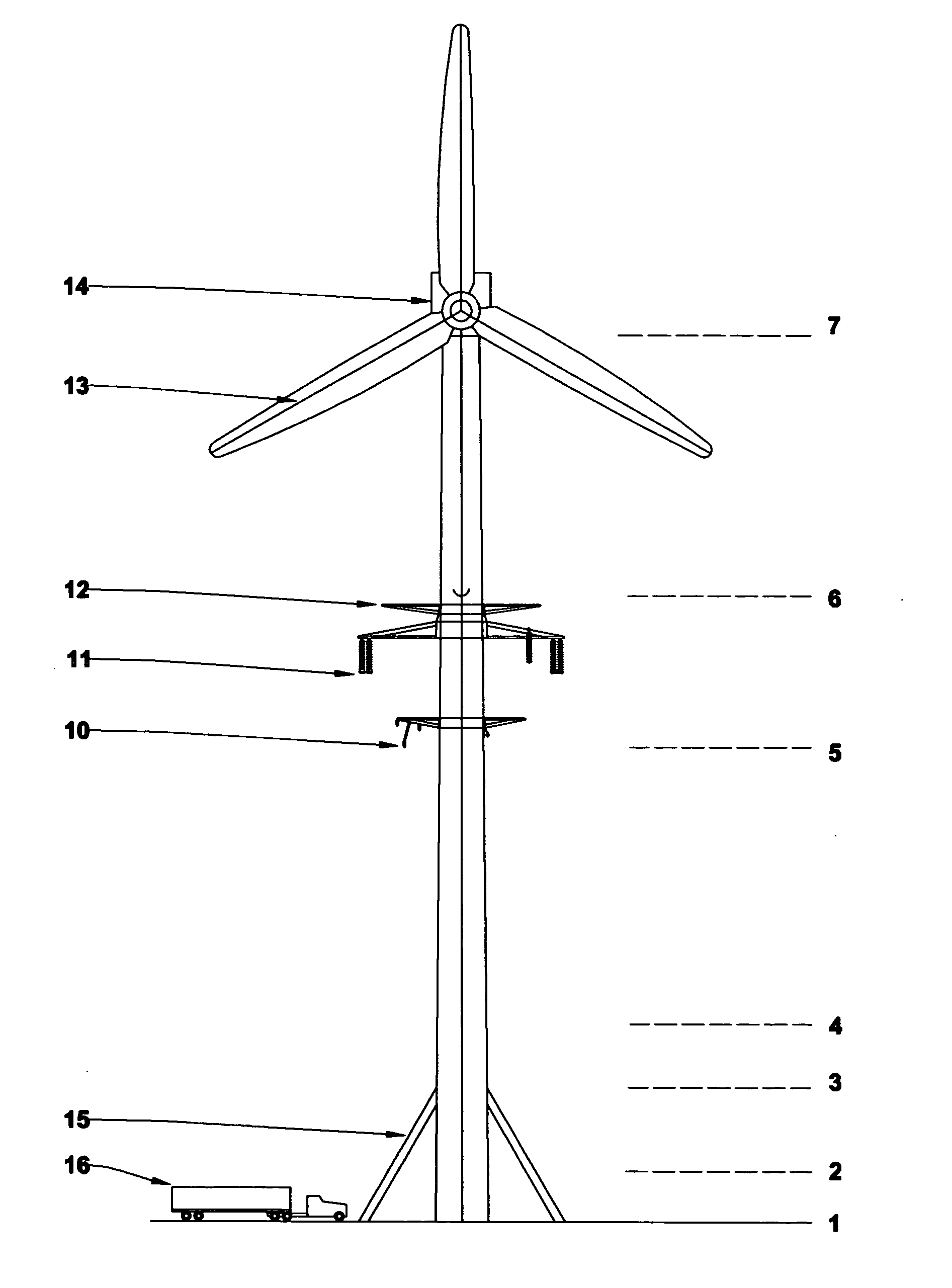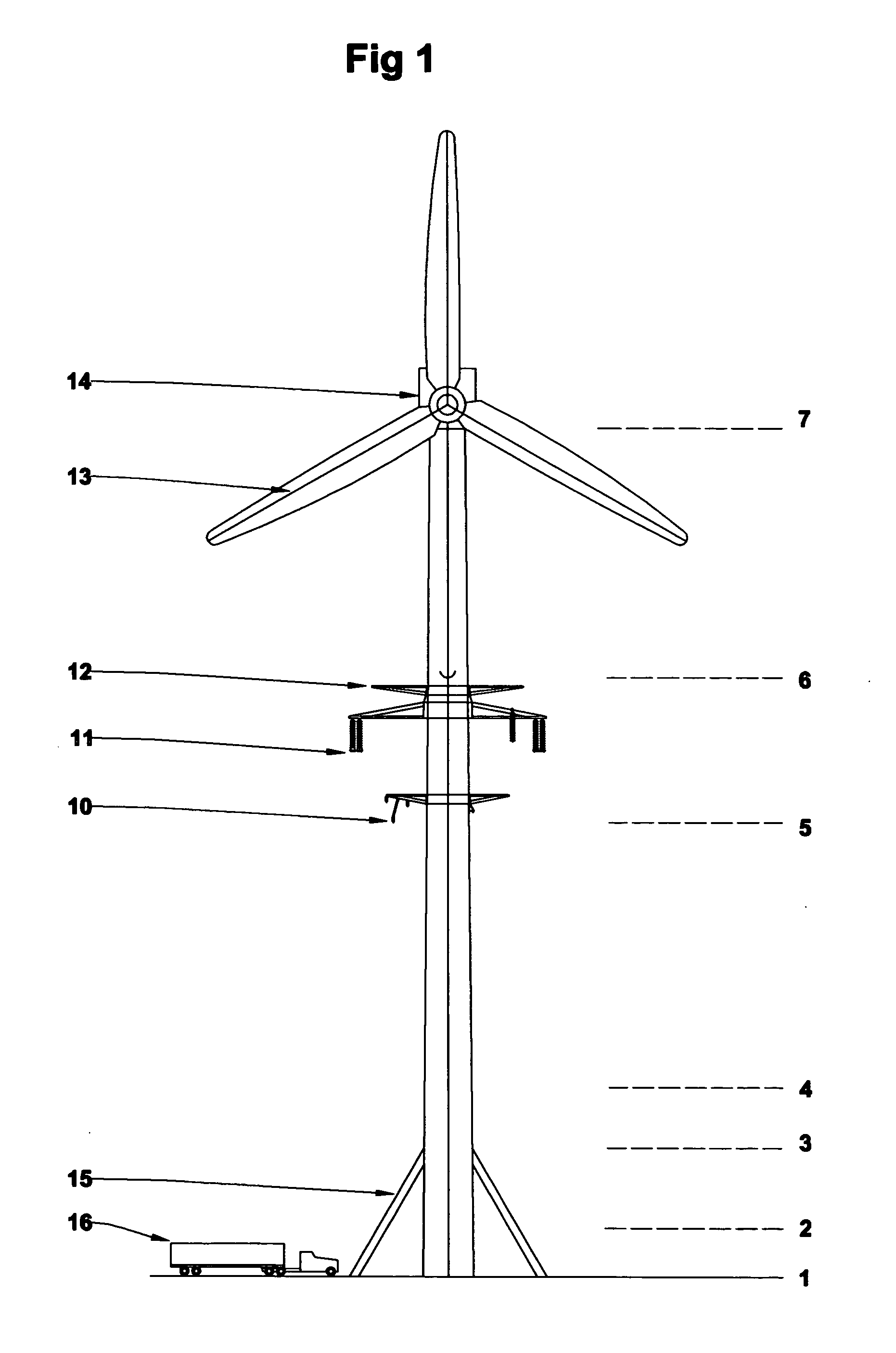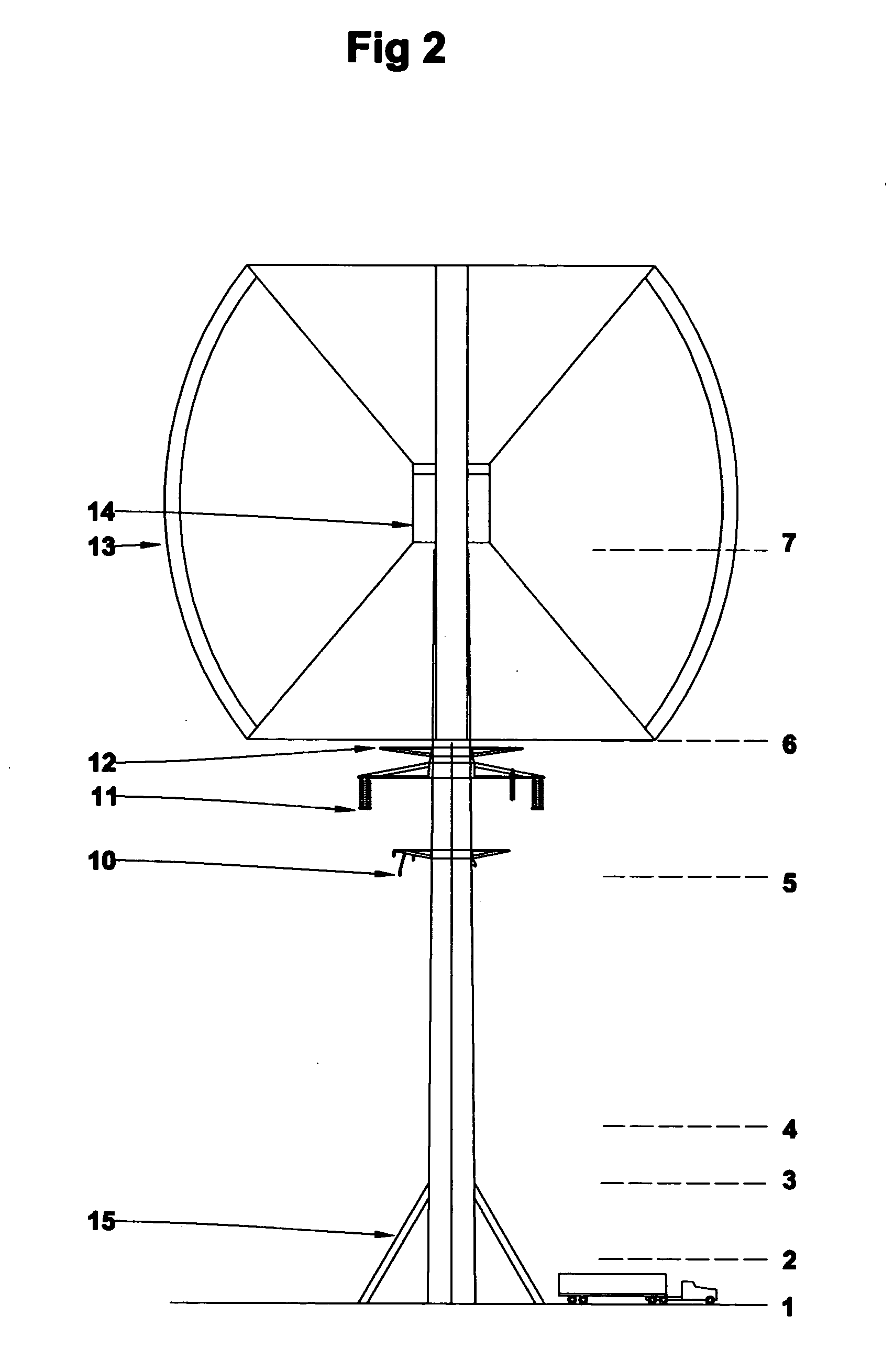Active electrical transmission system
a transmission system and electrical technology, applied in the direction of motors, single network parallel feeding arrangements, ac network load balancing, etc., can solve the problem of notoriously unreliable wind power, achieve the effect of reducing fuel costs, reducing stress on supporting insulators, and improving the return on investment in wind power
- Summary
- Abstract
- Description
- Claims
- Application Information
AI Technical Summary
Benefits of technology
Problems solved by technology
Method used
Image
Examples
third embodiment
[0047]FIG. 12 is a detail of the base of a transmission and generator tower constructed according to the invention showing a bi-directional fuel cell / electrolyser auxiliary power unit 60 connected electrically to the secondary conductors 10 by cable 61. The bidirectional fuel cell / electrolyser units may be Proton Exchange Membrane fuel cell / electrolysers as are manufactured by ProtonEnergy Corporation, USA, or SOFC fuel cell / electrolysers as are manufactured by several companies particularly those who were suppliers of the INEEL evaluations of this process, or any other suitable means. In this embodiment of the invention the secondary conductors are operated as DC at the rated input voltage of the fuel cell / electrolyser and generator unit, while the wind turbine, having either no auxiliary engine installed or a Rankine engine suited to waste heat recovery from SOFC electrical generation or possibly even any heat engine as in the descriptions above of FIGS. 10 or 11, simply rectifies...
first embodiment
[0049]FIG. 14 is a layout of a line of transmission and generator towers 71 installed in a horizontal catenary curve 72 or an arc 73 of radius equal the distance between the two supporting strain towers 70. The circles indicating the strain towers at 70 are exaggerated in scale by a factor of 11. This layout takes advantage of the fact that in most locations, as can be determined on typical wind rose maps, a design basis wind force will almost always blow from a prevailing direction, in this case indicated by wind direction arrow 74, while rarely if ever blowing from an opposite direction plus or minus 22.5 degrees, as indicated by wind direction arrows 75 and 76. By using a curved transmission line layout as indicated, the tension of the suspended conductors is easily transferred to heavy cable guys at the strain poles. But these guys and the conductor tension also provide a preload strain on the wind tower poles equal in the example illustrated to cos(5.7)*total conductor tension ...
fourth embodiment
[0050]FIG. 15 is an end view of a transmission and generator tower constructed according to the present invention showing three phase alternating current primary conductor tubes and underhung secondary conductors. All distances and indicated items are the same as in FIG. 1 but for the addition of Level line 4a which indicates the added height of this tower over a standard 82 meter tall tower of 36.5 meters, line 6a which indicates the new lowest point of the turbine blades 13 during their rotation, and line 8 which indicates the total height of the tower at 116.5 meters.
[0051]FIG. 16 is a detail cross section of the conductors of a transmisssion line formed of conductive walled tubes having installed in their interior 70 or on their exterior 71 an electrically isolated conductor of small cross section and relatively higher resistance than the main conductor tubes. At all times this conductor is electrically connected to the primary conductors at the transmitting end of the transmiss...
PUM
 Login to View More
Login to View More Abstract
Description
Claims
Application Information
 Login to View More
Login to View More - R&D
- Intellectual Property
- Life Sciences
- Materials
- Tech Scout
- Unparalleled Data Quality
- Higher Quality Content
- 60% Fewer Hallucinations
Browse by: Latest US Patents, China's latest patents, Technical Efficacy Thesaurus, Application Domain, Technology Topic, Popular Technical Reports.
© 2025 PatSnap. All rights reserved.Legal|Privacy policy|Modern Slavery Act Transparency Statement|Sitemap|About US| Contact US: help@patsnap.com



